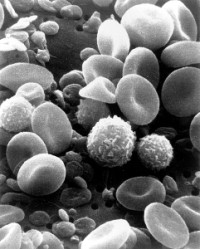 They say opposites attract and that couldn't be truer with these fun static electricity experiment. Find out about positively and negatively charged particles using a few basic items, can you control if they will be attracted or repelled to each other?
They say opposites attract and that couldn't be truer with these fun static electricity experiment. Find out about positively and negatively charged particles using a few basic items, can you control if they will be attracted or repelled to each other?What you'll need:
- 2 inflated balloons with string attached
- Your hair
- Aluminium can
- Woolen fabric
- Rub the 2 balloons one by one against the woolen fabric, then try moving the balloons together, do they want to or are they repelled to each other?
- Rub 1 of the balloons back and forth on your hair then slowly it pull it away, ask someone nearby what they can see or if there's nobody else around try looking in a mirror.
- Put the aluminium can on its side on a table, after rubbing the balloon on your hair again hold the balloon close to the can and watch as it rolls towards it, slowly move the balloon away from the can and it will follow.

- Rubbing the balloons against the woolen fabric or your hair creates static electricity. This involves negatively charged particles (electrons) jumping to positively charged objects. When you rub the balloons against your hair or the fabric they become negatively charged, they have taken some of the electrons from the hair/fabric and left them positively charged.
- They say opposites attract and that is certainly the case in these experiments, your positively charged hair is attracted to the negatively charged balloon and starts to rise up to meet it. This is similar to the aluminium can which is drawn to the negatively charged balloon as the area near it becomes positively charged, once again opposites attract.
- In the first experiment both the balloons were negatively charged after rubbing them against the woolen fabric, because of this they repelled each other.


